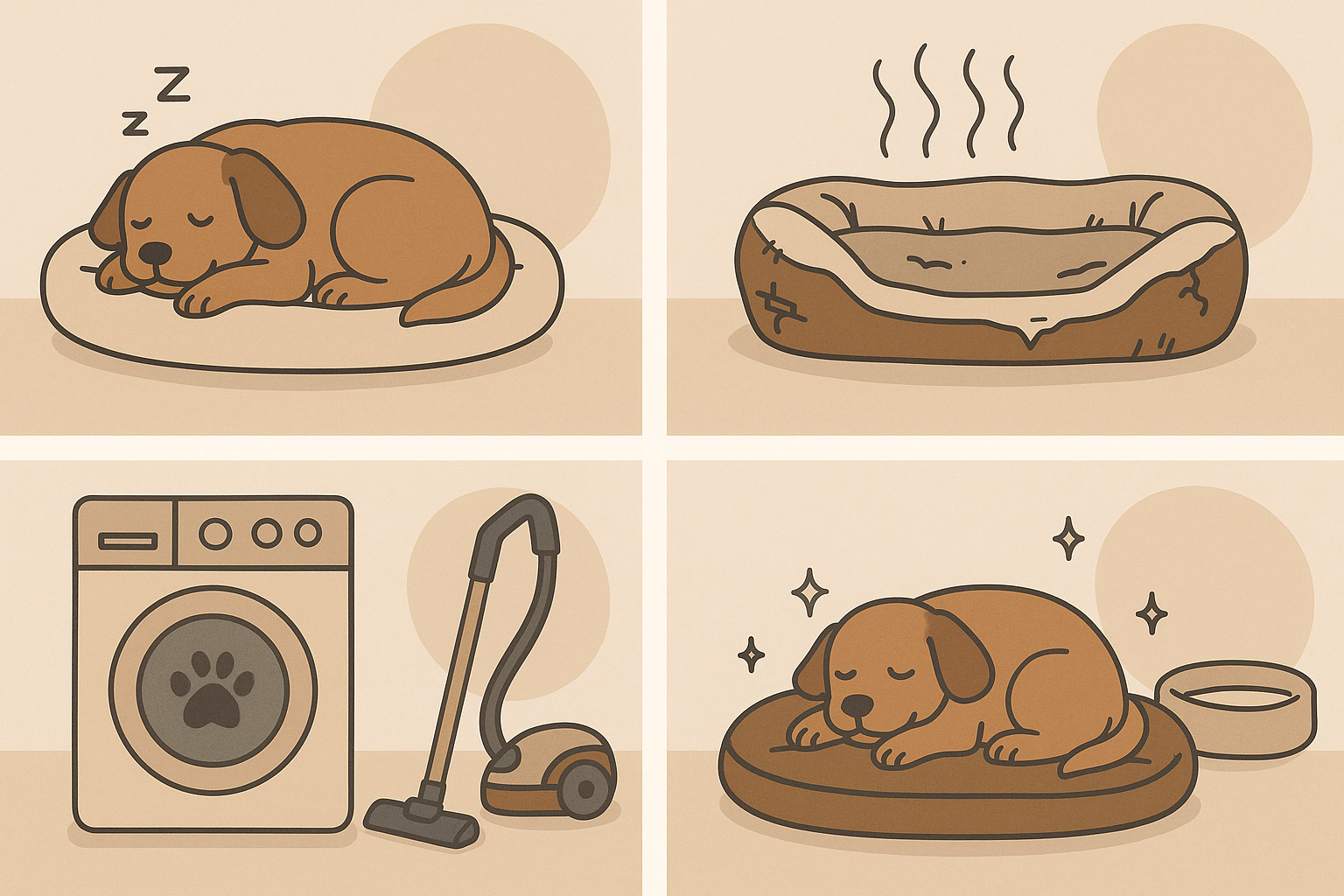Ever been confused in the dog food aisle, unsure which food is best for your dog? With so many options, it’s hard to know where to start. But don’t worry! This article will give you nine simple tips to help you choose the right food for your pup.
We’ll explain how to understand your dog’s needs and how to read labels. Let’s make picking the perfect dog food easy and stress-free!

Table of Contents
Toggle1. Understanding Your Dog’s Nutritional Needs
Every dog is unique, and their nutritional needs can vary based on age, breed, size, and activity level. Puppies, for example, require more calories and nutrients to support their rapid growth and development.
Adult dogs, on the other hand, need a balanced diet that maintains their health without leading to obesity. Senior dogs might require food that supports joint health and is easier to digest.

2. Key Ingredients to Look For
When reading dog food labels, focus on the ingredients list. Here are some key components to look for:
- High-Quality Protein: The primary ingredient in any dog food should be a high-quality protein source like chicken, beef, lamb, or fish. Protein is essential for muscle development and overall health.
- Healthy Fats: Fats provide energy and help keep your dog’s coat shiny and skin healthy. Look for sources like chicken fat, fish oil, and flaxseed oil.
- Carbohydrates: Carbs provide energy and fiber. Opt for whole grains like brown rice, barley, or oats, and vegetables like sweet potatoes and peas.
- Vitamins and Minerals: Ensure the food contains a balance of vitamins and minerals necessary for your dog’s overall well-being. These include calcium, phosphorus, and vitamins A, D, and E.
- Avoid Fillers and By-Products: Avoid foods with fillers like corn, wheat, and soy, which offer little nutritional value. Also, steer clear of meat by-products, which can be lower quality and harder to digest.
3. Types of Dog Food
There are several types of dog food to choose from, each with its own pros and cons. Understanding these can help you make an informed decision.
- Dry Kibble: Kibble is convenient, affordable, and has a long shelf life. It’s also good for dental health as it helps reduce tartar buildup. However, not all kibbles are created equal, so it’s important to choose a high-quality brand.
- Canned Food: Canned or wet food is often more palatable for dogs and contains more moisture, which can be beneficial for hydration. It’s usually more expensive and can lead to dental issues if used exclusively.
- Raw Diet: A raw diet includes raw meat, bones, fruits, and vegetables. Proponents argue it mimics a dog’s natural diet, but it requires careful preparation and can pose risks of bacterial contamination if not handled properly.
- Freeze-Dried and Dehydrated Food: These foods retain most of the nutrients found in raw diets but are more convenient to store and prepare. They can be more expensive and require rehydration before feeding.
4. Special Dietary Needs
Some dogs have specific dietary needs due to health conditions or sensitivities. Here are a few examples:
- Food Allergies: Common allergens include beef, dairy, wheat, and chicken. If your dog shows signs of food allergies, such as itching, ear infections, or gastrointestinal issues, consider a hypoallergenic diet or limited ingredient food.
- Weight Management: Overweight dogs may benefit from a weight management formula that is lower in calories and higher in fiber to help them feel full.
- Sensitive Stomachs: Dogs with sensitive stomachs might do better on a diet with easily digestible ingredients and added probiotics for gut health.
- Joint Health: For older dogs or breeds prone to joint issues, look for foods with added glucosamine and chondroitin.

5. Reading the Label
Decoding dog food labels can be tricky, but it’s essential for making the right choice. Here are some tips:
- Ingredient List Order: Ingredients are listed by weight. The first few ingredients should be quality protein sources.
- Guaranteed Analysis: This section shows the minimum percentages of crude protein and fat, and the maximum percentages of crude fiber and moisture. Compare these values to your dog’s needs.
- AAFCO Statement: Look for the Association of American Feed Control Officials (AAFCO) statement, which indicates the food meets the minimum nutritional requirements.
- Feeding Guidelines: Follow the feeding guidelines on the packaging, but adjust based on your dog’s activity level, age, and weight.
6. Consulting with Your Veterinarian
Your veterinarian is an invaluable resource when choosing the right dog food. They can provide personalized recommendations based on your dog’s specific health needs and lifestyle.
Regular check-ups will help ensure your dog stays healthy and their diet remains appropriate as they age or if their health condition changes.
7. Transitioning to a New Food
When switching your dog to a new food, do so gradually to avoid gastrointestinal upset. Start by mixing a small amount of the new food with their current food, gradually increasing the proportion of new food over a week or two. Monitor your dog for any adverse reactions, such as vomiting, diarrhea, or changes in appetite or behavior.

8. Keeping Your Dog Hydrated
Regardless of the type of food you choose, always ensure your dog has access to fresh, clean water. Hydration is crucial for their overall health and helps with digestion and nutrient absorption.
9. Monitoring Your Dog’s Health
Once you’ve chosen the right food, watch your dog’s health and behavior. Signs of a well-nourished dog include:
- Healthy Weight: Maintain your dog’s healthy weight by monitoring its body condition and adjusting food portions as needed.
- Shiny Coat and Healthy Skin: A balanced diet should result in a shiny coat and healthy skin.
- Energy Levels: Your dog should have consistent energy levels appropriate for their age and breed.
- Regular Bowel Movements: Healthy digestion is a sign of good nutrition. Your dog’s stools should be firm and regular.
FAQs
Q1: How can I tell if my dog is allergic to their food?
A: Signs of food allergies in dogs include itching, skin rashes, digestive issues, and ear infections. If you suspect an allergy, consult your vet.
Q2: Is wet or dry food better for my dog?
A: Both wet and dry dog foods can be nutritionally balanced. Choose based on your dog’s preferences, dental health, and any specific dietary needs.
Q3: Can I mix different types of dog food together?
A: Mixing different types of dog food can be beneficial, but do so gradually to avoid digestive upset, and ensure a balanced diet.
Conclusion:
In this article, we’ve shared everything you need to know about picking the right dog food. From understanding your dog’s needs to reading labels and thinking about special diets, we’ve made it simple. Follow these nine tips to confidently choose the best food for your furry friend. Remember, your dog’s health and happiness depend on your choice, so make it a good one!




